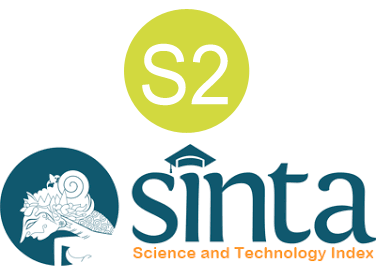The Role of Husbands in Teaching Hinduism to Sudhi Wadani Wife in Interfaith Marriages
DOI:
https://doi.org/10.37329/jpah.v9i1.3814Keywords:
Interfaith marriage, Husband's role, Religious learning, HinduismAbstract
Interfaith marriage in Indonesia is a complex issue that involves legal, social, and religious dilemmas. Marriages must be legal under both religious and state law, which requires the bride and groom to be of the same faith to be recognized as religiously valid. This provision has caused controversy and injustice, especially regarding religious freedom and human rights in a multicultural society. The Study aims to focuses on the role of husbands in providing an understanding of Hinduism to wives who have undergone Sudhi Wadani who previously adhered to other religions, especially in the context of interfaith marriages. This research uses a qualitative, phenomenological method, in-depth interview techniques, and participatory observation. was conducted in Palu City in 2024 with 13 informants husband. The results showed that the husband plays a central role in guiding his wife to understand the teachings of Hinduism, which is realized through direct teaching, accompanying in religious activities, and being a role model. The obstacles husbands face include limited religious knowledge, lack of time due to busy work, and wife's sensitivity. The strategies husbands apply to overcome these obstacles include inviting wives indirectly to engage in religious activities, patient communication, and utilization of religious communities to learn. This concludes that the husband's role in guiding his wife to understand the teachings of Hinduism in an interfaith marriage is vital and requires consistent, flexible, and practice-based efforts. Practical recommendations for interfaith couples and relevant institutions to strengthen support for Hindu husbands of wives who have undergone Sudhi Wadani in interfaith marriages.
References
A’yunina, E. Q. A., & Bachri, S. (2023). Judges’ Ratio Decidendi to Accept and Reject Interfaith Marriage in The Perspective of Indonesian Positive Law. Jurnal Hukum Prasada, 10(2), 112–122.
Ali, P. A., McGarry, J., & Maqsood, A. (2022). Spousal Role Expectations and Marital Conflict: Perspectives of Men and Women. Journal of Interpersonal Violence, 37(9–10)
Ariasa, P. (2022). Implementasi Model Pembelajaran Kooperatif Tipe STAD Untuk Meningkatkan Hasil Belajar Pendidikan Agama Hindu Siswa Kelas III. Journal of Education Action Research, 6(4), 57–572.
Aziz, R., & Mangestuti, R. (2021). Membangun Keluarga Harmonis Melalui Cinta Dan Spiritualitas Pada Pasangan Suami Istri Di Provinsi Jawa Timur. Jurnal Ilmu Keluarga Dan Konsumen, 14(2), 129–139.
Badra, I. K., Winaja, I. W., & Suasthi, I. G. A. (2023). Otonan Ceremony Dynamics in Susuan Traditional Village. International Journal of Social Sciences and Humanities, 7(2), 163–170.
Bentil, J. A. (2023). Challenges Associated with Marriages in Ghana: Implications for Counselling on Marital Satisfaction. International Journal Of Social Science Humanity & Management Research, 2(12).
Bhagwandas, I. (2019). Spiritual Mental Development Through Hindu Education For HIV AIDS. Vidyottama Sanatana: International Journal of Hindu Science and Religious Studies, 3(2), 227.
Bhattacharyya, K. K. (2020). The Sacred Relationship Between Marriage, Spirituality And Healthy Aging In Hinduism. Journal of Religion, Spirituality & Aging, 32(2), 135–148.
Budiadnya, P. (2019). Peran Guru Rupaka Daalam Menanamkan Ajaran Agama Hindu Dalam Keluarga Di Kota Surakarta. Kamaya: Jurnal Ilmu Agama, 2(2), 123–142.
David, C. (2023). Shakti and Lakshmi Principles. Empowering Women In Indian Tradition. SYNERGY, 1(19).
DeNapoli, A. E. (2023). Can a Woman be a True Guru? Female Hindu Gurus’ Grassroots Religious Gender Activism in India, and the Performativity of Saintliness at the Kumbh Mela. Feminist Encounters: A Journal of Critical Studies in Culture and Politics, 7(1)
DeNapoli, Antoinette Elizabeth. (2017). “Dharm is Technology”: the Theologizing of Technology in the Experimental Hinduism of Renouncers in Contemporary North India. International Journal of Dharma Studies, 5(1), 18.
Ghimire, D. J., Axinn, W. G., & Smith-Greenaway, E. (2015). Impact of the Spread of Mass Education on Married Women’s Experience with Domestic Violence. Social Science Research, 54, 319–331.
Gunada, I. W. A., & Suastra, I. M. (2023). Hindu Character Education And Entrepreneurial Ability As A Capital Of Independence For Arts And Culture Education Students. Vidyottama Sanatana: International Journal of Hindu Science and Religious Studies, 7(1), 56–65.
Harjanto, R., Haryanto, E., Tumanggor, M., Indriati, N. R., & Adhinugroho, M. (2023). The Benefits And Challenges Of Same-Religious And Interfaith Marriages. Russian Law Journal, 11(3), 1139-1150.
Holt, J. D. (2024). Understanding Hinduism. London: Bloomsbury Publishing Plc.
Kamble, S. V., Watson, P. J., Marigoudar, S., & Chen, Z. (2014). Varieties of Openness and Religious Commitment in India. Archive for the Psychology of Religion, 36(2), 172–198.
Krishnan, S. (2023). Carceral Domesticities and the Geopolitics of Love Jihad. Environment and Planning D: Society and Space, 41(6), 995–1012.
Lathifah, A. (2020). State Marriage and Civil Marriage: The Role of State Policy on Interreligious Marriage in Central Java. AL-IHKAM: Jurnal Hukum & Pranata Sosial, 15(1), 1–30.
Leavitt, C. E., Allsop, D. B., Price, A. A., Marks, L. D., & Dollahite, D. C. (2021). Exploring Gender Roles in Highly Religious Families. Review of Religious Research, 63(4), 511–533.
Locklin, R. B. (2015). Non-Dual Belonging: Conversion, Sanskritization and the Dissolution of the Multiple in Advaita Missionary Movements. Journal of Hindu-Christian Studies, 28(1).
Mahathir, M. T., Syed, N. M., Shariffah, N. A., & Suyatno, S. (2022). The Regulations, Practices and Impacts of Interfaith Marriage in Lombok, Indonesia. International Journal of Academic Research in Business and Social Sciences, 12(11).
Mandara, I. W. K., Gelgel, I. P., & Dharmika, I. B. (2022). Hindu Identity Maintenance of Mixture Marriage in DKI Jakarta. International Journal of Social Sciences, 5(3), 222–229.
Minnema, L. (2023). The Educational Function of a Hindu Core Text in a Liberal Arts Context: Character Education and Caring for the Soul in the Bhagavadgita. Religious Education, 118(4), 325–342.
Pulcini, T. (2020). Handbook of Leaving Religion. Journal of Contemporary Religion, 35(3), 583–587.
Rachmadhani, T. C., & Herdiana, I. (2021). Dinamika Resiliensi Istri Pada Pernikahan Beda Agama. Buletin Riset Psikologi Dan Kesehatan Mental (BRPKM), 1(1), 209–220.
Ratna Sari, N. L. (2023). Kepuasan Pernikahan Ditinjau Dari Sikap Religius Dan Seksualitas. Pangkaja: Jurnal Agama Hindu, 26(2), 133–141.
Santipatni, G. A. (2021). Application of Didactic Methods in Planting Values of Culture Through Maligya Ceremony at Hindu Communities. Journal of Education Research and Evaluation, 5(2), 234.
SARIASLAN, F. (2023). Hindu Nationalism and Rising Anti-Islamism in India. Medya ve Din Araştırmaları Dergisi, 6(1), 103–124.
Segara, I. N. Y. (2021). Positive Religious Coping, Cultural Anthropology of Women Rights and Well-Being of Hindu Women in Bali Indonesia: Mediation of Socio-Economic Women Rights. Journal of Ethnic and Cultural Studies, 8(3), 262–281.
Sharma, B. K. (2013). Hinduism and TESOL: Learning, Teaching and Student‐Teacher Relationships Revisited. Language and Linguistics Compass, 7(2), 79–90.
Sidiqah, M. (2023). Legal Vacuum In Interfaith Marriage Rules In Indonesia. Iblam Law Review, 3(1), 99–110.
Somertini, N. L. (2022). Model Pembelajaran STAD Berbantuan Media Gambar untuk Meningkatkan Hasil Belajar Pendidikan Agama Hindu pada Siswa Kelas IV. Journal of Education Action Research, 6(4), 518–525.
Suardana, I. K., Sukarlinawati, W., & Suwendra, I. W. (2023). The Importance of Hinduism And Cultural Education Role Through Customary Village-Based Non-Formal Education to Maintain the Integrity of Bali. International Journal of Multidisciplinary Sciences, 1(4), 403–414.
Sumartini, N. W. E. (2024). Peran Suami dalam Perlindungan Perempuan terhadap Kekerasan dalam Rumah Tangga Perspektif Hukum Agama Hindu. Vyavahara Duta, 19(1), 77-85.
Sutirta, I. N. P., Suda, I. K., & Indiani, N. M. (2023). Online Learning on Hindu Religious Religion and Thoughts During The Covid-19 Pandemic at Elementary School in Abang District, Karangasem District. Journal Transnational Universal Studies, 1(2), 45-74.
Suyaman, P., & Fitriah Alfiany, T. (2022). Polemics of Interfaith Marriage Reviewed from the Perspectives of Marriage Law and the Compilations of Islamic Law. KnE Social Sciences.
Syatar, A., Syarif, M. F., Alimuddin, H., Kurniati, K., & Rasna, R. (2023). Interfaith Marriage Phenomenon in Indonesia from the Perspective of Sadd al-Żarī’ah and Fatḥ al-Żarī’ah. FITRAH: Jurnal Kajian Ilmu-Ilmu Keislaman, 9(1), 19–38.
Tirta, D. G. K. (2022). Kesetiaan Suami Istri Dalam Manawa Dharmasastra. Pangkaja: Jurnal Agama Hindu, 25(2), 102–109.
Wedanti, I. G. A. J. M., Windia, I. W. P., & Sudantra, I. K. (2023). Perkawinan Negen Dadua sebagai Wujud Kesetaraan Gender dalam Masyarakat Hukum Adat Bali. SINTHOP: Media Kajian Pendidikan, Agama, Sosial Dan Budaya, 2(2), 90–103.
Widana, I. N. M., & Wirata, I. W. (2023). Strategy Of Hindu Institutions In Maintaining Religious Harmony In Hindu Communities In Outskirts Areas. Cogent Social Sciences, 9(1).
Yulita, N., Baso, F., Novita Sari, K., . H., Aisyah Mu’min, S., & Novita Mudriani Djaoe, A. (2022). Legal Age of Marriage: A Socio-Science Review. KnE Social Sciences, 411–420.
Downloads
Published
How to Cite
Issue
Section
License
Copyright (c) 2025 Ni Ketut Ratini

This work is licensed under a Creative Commons Attribution-ShareAlike 4.0 International License.
An author who publishes in the Jurnal Penelitian Agama Hindu agrees to the following terms:
- Author retains the copyright and grants the journal the right of first publication of the work simultaneously licensed under the Creative Commons Attribution-ShareAlike 4.0 License that allows others to share the work with an acknowledgement of the work's authorship and initial publication in this journal
- Author is able to enter into separate, additional contractual arrangements for the non-exclusive distribution of the journal's published version of the work (e.g., post it to an institutional repository or publish it in a book) with the acknowledgement of its initial publication in this journal.
- Author is permitted and encouraged to post his/her work online (e.g., in institutional repositories or on their website) prior to and during the submission process, as it can lead to productive exchanges, as well as earlier and greater citation of the published work (See The Effect of Open Access).
Read more about the Creative Commons Attribution-ShareAlike 4.0 Licence here: https://creativecommons.org/licenses/by-sa/4.0/.








